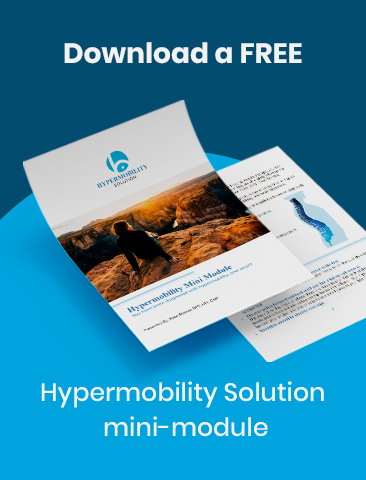Hypermobility and cardio have a unique relationship. Various patients have come into my practice concerned about doing cardio and afraid of falls and injuries.
I can understand them; there are some issues inherent to being Hypermobile that may cause fear in people. However, today I’ll explain how beneficial cardio can be for Hypermobility and how you can safely integrate it into your routine.
Cardio is the type of exercise that gets your heart and lungs pumping and transfers oxygen to the muscles. It can help reduce fatigue and makes your energy capacity increase.
This type of exercise can help you lose weight, reduce the risk of several diseases, improve your lung capacity, better sleep and have better mental health overall.
To better understand how you can do cardio safely, keep reading; I’ll give you the best tips to get you going as soon as possible.
How Should I start?
If you are starting with cardio, I would recommend you to take it slow. Usually, 5 minutes is more than enough to begin conditioning your body for a time and pace increase. If you feel like you can do more, for example, 15 minutes, then start with 10 minutes.
It’s best to start slow than to have to stop altogether due to a flare-up.
How Can I Find My Pace?
The same goes for the pace you should have. A good rule of thumb is being able to talk while you do your cardio routine. If you are struggling with breathing and cannot hold a conversation, you need to slow down a bit.
You can also use your max heart rate as a measurement for your pace. To calculate it, subtract your age number to 220. Then, stay only at 60% of your max rate, and you should be going at a safe pace.
What if I feel pain?
It is normal to feel pain after doing a cardio routine. However, you must identify what is good and what is bad pain.
If it’s good pain, it should clear out after one day. If you are still hurting after two days, you should change something of your routine. Maybe you are doing the wrong exercise, or you are going too fast and too hard.
What type of cardio should I do?
This is possibly the quintessence of being able to do cardio safely as a Hypermobile. You should be mindful of those exercises that can be hard on your joints or that can make you fall and injure yourself.
If you want to do sports like rugby, soccer, basketball, barre class & running, I recommend you do them only socially as a one-time thing. For your regular exercise routine, stick to exercises such as cycling, walking, & elliptical.
Running & swimming
If you are a runner and have good form, you are more than welcome to run as your cardio routine. However, if you don’t have good form or core strength, maybe you should make sure first to achieve those two goals before sticking to a running program.
The same goes for swimming. If you are a swimmer, then, by all means, feel free to swim as much as you want. However, if you are starting, I would recommend you to get classes first.
When you are in the water, there is little to no resistance to the movement of your body. This is why you can get in overextended positions and flare-up and why good form and core strength are so important.
How can I track my progress?
There are some simple ways to track your progress – you can use a smartphone or a smartwatch that will tell you everything you need to know.
This step is important because there are days where you will feel stuck and demotivated to do anything. On those types of days, it is good to have a track record of how far you’ve come.
If you prefer something simpler, feel free to keep a journal to track how much exercise you did, your time, and your pace.
Why do I get dizzy when I do cardio?
If you get nauseous and dizzy while doing cardio, you should start by checking your heart rate and blood pressure so you can then report to your doctor with the measurements.
Some types of Hypermobility are associated with heart rate and blood pressure problems, so make sure everything is running correctly.
If that’s under control, then most probably you need to slow down or do less. Try cutting it down by 50% and see how you feel.
When should I start doing cardio?
The answer to that question is simple: TODAY.
There will never be a perfect time to start with cardio. Make sure you find a spot in your life for it to live in. Make sure you put it in a slot of time that is easy for you to maintain.
I hope after reading all this information, you now feel comfortable starting our cardio routine. To do it successfully, don’t forget to:
- Stick to low-impact activities.
- Track your progress and pain level.
- Be consistent.
- Emphasize both core and extremity muscle tone.
- Perform balance exercises.
- Avoid distance running.
- Avoid end ranges (at least initially).
- Incorporate isometric exercises.
Enjoy moving safely!

About Kate

Kate Skinner is a Doctor in Physical Therapy, co-founder of Great Divide Physical Therapy, and creator of Hypermobility Solution.
Recent Posts

1 thought on “All You Need To Know About Hypermobility & Cardio”
Leave a Comment
You must be logged in to post a comment.


I heard that performing exercise on an empty stomach first thing in the morning is the greatest method to lose weight. Is this correct? I look forward to reading more of your work in the future.